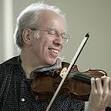 Violinist Gidon Kremer’s art has been celebrated since he first entered the Riga Music School at age 7. Winning the highest prizes in Latvia, among his rewards was his trip to the USSR to spend two years studying in Moscow with their most eminent violinist, David Oistrakh. Kremer went on to win more distinction, including 1st Prize in the Tchaikowsky International Competition, in 1970, at age 23. His performance on Feb. 2, 2014, in San Francisco, showed that there is even more depth and humanity to him than being one of the world’s great musicians. He performed as leader and soloist with the Kremerata Baltica, a chamber orchestra which he founded in 1997. It is composed of young musicians from the Baltic nations (Latvia, Lithuania, Estonia). The musicians, younger than Mr.Kremer, not children, are exquisite players. They are “together” in every sense of the word, creating a strong and flexible sound that suits the most lyrical and the harshest music their program asked of them. It was a stunning performance of challenging music, new to this listener and, it appeared, to most of the audience. In addition to championing musicians from the Baltics, Mr. Kremer is the champion of music by modern composers like Britten and Shostakovich, and less well known Eastern European composers such as Mieczyslaw (Moisey) Weinberg. They performed Violin Sonata Op.134, by Shostakovich; Variations on a Theme of Frank Bridge, Op.10, by Britten; Symphony #10, by Weinberg; Concertino for Violin and Strings, Op. 42, by Weinberg. This was an opportunity for Britten’s music to be the light-hearted item on a program. It introduces a theme and proceeds through ten variations such as March, Wiener Walzer, Moto perpetuo. Thoroughly interesting and enjoyable, it was a tribute by Britten to the gifts of his teacher as he demonstrates his own. Shostakovich’s Violin Sonata seems to have been composed by the composer reaching into his chest and pulling on the arteries of his heart. It was composed for David Oistrakh. Mr. Kremer’s performance contained all the emotion of the music as well as exquisite technical achievement. The piece was composed in 1968, the year that the USSR sent tanks into the Prague Spring. Shostakovich knew well the surprise that could come at night like the crack of the bow on the cello. He knew the horror that cartoon ghouls, unaware of being self-satires, could wreak. He knew there was a mysterious beauty that sounds like stars coming out at night. The strings pluck; the terror is understated. The music sighs and wonders. It was a great piece by a great composer played with great soul. Shostakovich considered Weinberg a great composer and friend; Weinberg said that meeting Shostakovich, “was as if I had been born anew.” The Concertino, written in 1948, was not performed in that time. It has a sound of evanescence which wafts a lovely, but sometimes painful sensibility. The final movement sounds a warning in the midst of a waltz. Weinberg’s Symphony #10 expanded our introduction to this complex composer. It opens with a festive, delicate sound. There is interplay between the violins and deeper strings, a conversation trading dancing rhythms. The music evokes a feeling of anxiety and then replaces it with gliding lyricism. One hopes to hear more of this composer. POST SCRIPT: Weinberg’s 10th Symphony was added to the program to replace Shostakovich’s Anti-Formalist Gallery which was to be sung in Russian by Alexei Mochalov. Mr. Mochalov’s wife died suddenly, and he could not appear. The satirical, musical play, printed in the program, reflects Shostakovich’s bitter awareness of the bureaucrats allowed to play fatal games with the lives of artists and their work. The Musical Functionaries: “Yes, yes, yes, yes,/Inside, inside,/To labor camps we’ll send them all!” It was fair to choose another Weinberg piece for fill in for Shostakovich. Weinberg’s life had all too many interactions with the hounds of the state. Born in Poland, he was chosen to study piano in the US. When World War II broke out, getting to the US was not easy. He went to the USSR. His father-in-law was murdered by Stalin the year the Concertino was written. Weinberg was arrested, in 1953, charged with “Jewish bourgeois nationalism.” This was the year that Stalin murdered doctors allegedly for plotting against his state. Weinberg’s one bit of luck: he was imprisoned and would have been killed if it had not been for Shostakovich’s intervention. The composer had that good fortune that he was to be killed at a time when Shostakovich was in the thugs’ good graces.
Violinist Gidon Kremer’s art has been celebrated since he first entered the Riga Music School at age 7. Winning the highest prizes in Latvia, among his rewards was his trip to the USSR to spend two years studying in Moscow with their most eminent violinist, David Oistrakh. Kremer went on to win more distinction, including 1st Prize in the Tchaikowsky International Competition, in 1970, at age 23. His performance on Feb. 2, 2014, in San Francisco, showed that there is even more depth and humanity to him than being one of the world’s great musicians. He performed as leader and soloist with the Kremerata Baltica, a chamber orchestra which he founded in 1997. It is composed of young musicians from the Baltic nations (Latvia, Lithuania, Estonia). The musicians, younger than Mr.Kremer, not children, are exquisite players. They are “together” in every sense of the word, creating a strong and flexible sound that suits the most lyrical and the harshest music their program asked of them. It was a stunning performance of challenging music, new to this listener and, it appeared, to most of the audience. In addition to championing musicians from the Baltics, Mr. Kremer is the champion of music by modern composers like Britten and Shostakovich, and less well known Eastern European composers such as Mieczyslaw (Moisey) Weinberg. They performed Violin Sonata Op.134, by Shostakovich; Variations on a Theme of Frank Bridge, Op.10, by Britten; Symphony #10, by Weinberg; Concertino for Violin and Strings, Op. 42, by Weinberg. This was an opportunity for Britten’s music to be the light-hearted item on a program. It introduces a theme and proceeds through ten variations such as March, Wiener Walzer, Moto perpetuo. Thoroughly interesting and enjoyable, it was a tribute by Britten to the gifts of his teacher as he demonstrates his own. Shostakovich’s Violin Sonata seems to have been composed by the composer reaching into his chest and pulling on the arteries of his heart. It was composed for David Oistrakh. Mr. Kremer’s performance contained all the emotion of the music as well as exquisite technical achievement. The piece was composed in 1968, the year that the USSR sent tanks into the Prague Spring. Shostakovich knew well the surprise that could come at night like the crack of the bow on the cello. He knew the horror that cartoon ghouls, unaware of being self-satires, could wreak. He knew there was a mysterious beauty that sounds like stars coming out at night. The strings pluck; the terror is understated. The music sighs and wonders. It was a great piece by a great composer played with great soul. Shostakovich considered Weinberg a great composer and friend; Weinberg said that meeting Shostakovich, “was as if I had been born anew.” The Concertino, written in 1948, was not performed in that time. It has a sound of evanescence which wafts a lovely, but sometimes painful sensibility. The final movement sounds a warning in the midst of a waltz. Weinberg’s Symphony #10 expanded our introduction to this complex composer. It opens with a festive, delicate sound. There is interplay between the violins and deeper strings, a conversation trading dancing rhythms. The music evokes a feeling of anxiety and then replaces it with gliding lyricism. One hopes to hear more of this composer. POST SCRIPT: Weinberg’s 10th Symphony was added to the program to replace Shostakovich’s Anti-Formalist Gallery which was to be sung in Russian by Alexei Mochalov. Mr. Mochalov’s wife died suddenly, and he could not appear. The satirical, musical play, printed in the program, reflects Shostakovich’s bitter awareness of the bureaucrats allowed to play fatal games with the lives of artists and their work. The Musical Functionaries: “Yes, yes, yes, yes,/Inside, inside,/To labor camps we’ll send them all!” It was fair to choose another Weinberg piece for fill in for Shostakovich. Weinberg’s life had all too many interactions with the hounds of the state. Born in Poland, he was chosen to study piano in the US. When World War II broke out, getting to the US was not easy. He went to the USSR. His father-in-law was murdered by Stalin the year the Concertino was written. Weinberg was arrested, in 1953, charged with “Jewish bourgeois nationalism.” This was the year that Stalin murdered doctors allegedly for plotting against his state. Weinberg’s one bit of luck: he was imprisoned and would have been killed if it had not been for Shostakovich’s intervention. The composer had that good fortune that he was to be killed at a time when Shostakovich was in the thugs’ good graces. 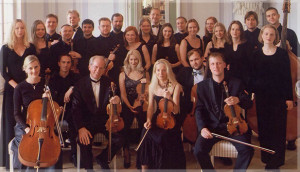 For such an extraordinary soloist, Mr. Kremer has done much to widen the world of music. In addition to Kremerata, he has founded and directed music festivals in Lockenhaus, Austria, Gstaad and Basel, Switzerland, and Munich. Look for his recordings: The Berlin Recital with Martha Argerich, EMI; Mozart’s Violin Concertos with the Kremerata, on Nonesuch.
For such an extraordinary soloist, Mr. Kremer has done much to widen the world of music. In addition to Kremerata, he has founded and directed music festivals in Lockenhaus, Austria, Gstaad and Basel, Switzerland, and Munich. Look for his recordings: The Berlin Recital with Martha Argerich, EMI; Mozart’s Violin Concertos with the Kremerata, on Nonesuch.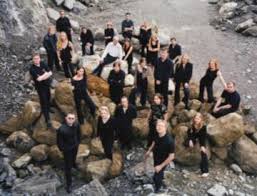
Author Archives: Leslie
STARBUCKS in MOUNTAIN VIEW: THANK YOU!
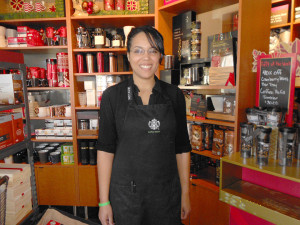 Here is Ashley Whitlock, the manager of Starbucks on Castro St., in Mountain View. Please stand and cheer for Ms Whitlock! She donated coffee, cream, cups, sugars (and non-sugars), napkins, stir sticks to The Lively Foundation for the International Dance Festival-Silicon Valley in 2012 and 2013, and for the Festival of Lights, Dec. 2013. Ms Whitlock is a musician in addition to be a manager. She says she loves to help Lively help the arts. Support our supporters! It will be such a pleasure to do: visit Starbucks on Castro, enjoy a latte, a bear claw, a sandwich, and join us in giving thanks for Ashley Whitlock. The dancers at IDF-SV and our audience in Dec. benefitted from her generosity and Starbucks coffee.
Here is Ashley Whitlock, the manager of Starbucks on Castro St., in Mountain View. Please stand and cheer for Ms Whitlock! She donated coffee, cream, cups, sugars (and non-sugars), napkins, stir sticks to The Lively Foundation for the International Dance Festival-Silicon Valley in 2012 and 2013, and for the Festival of Lights, Dec. 2013. Ms Whitlock is a musician in addition to be a manager. She says she loves to help Lively help the arts. Support our supporters! It will be such a pleasure to do: visit Starbucks on Castro, enjoy a latte, a bear claw, a sandwich, and join us in giving thanks for Ashley Whitlock. The dancers at IDF-SV and our audience in Dec. benefitted from her generosity and Starbucks coffee.
Pinchas Zukerman, Royal Philharmonic Orchestra, Beethoven: Violins Part II
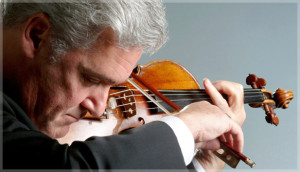
 The headline tells it all; the writer will elaborate briefly for readers who have not heard Pinchas Zukerman play or who wonder about Beethoven and the violin. However, the available superlatives all fall away in remembering this musical experience. On January 26, 2014, Pinchas Zukerman was both the conductor and the solo violinist for London’s Royal Philharmonic performing three works by Beethoven: Overture to The Creatures of Prometheus; Violin Concerto in D maj; Symphony No. 5. One could say it was a celestial experience if it were not that Beethoven insists upon being an earthling. The music rips right into whatever it means to be human, the myriad things it means to be human, and celebrates life here on earth. The people wanting to build that foul pipeline of tar sands oil across American lands could never have heard Beethoven. Oddly enough, Beethoven’s music somehow encompasses even them. Mr. Zukerman’s low key approach to conducting is deceptive. Those who have witnessed famous adults and highly skilled ten year olds dramatically waving their violin bows in order to tell their audience when they are playing something important and when they are ready for an ovation might find the absence of dramatics disappointing, but his style allows the music to be the only focal point. Mr. Zukerman’s playing is masterful, a joy. In the lengthy concerto it ranged from exquisite simplicity to complex, virtuosic performance that left one breathless. The concerto’s last movement is a delightful dance. The theme sounds like fun, but it is able to be playful because it dances on top of such musical complexity and Beethovenian energy. One moment in Mr. Zukerman’s performance particularly revealed how thoroughly he lives in the music. His back to the audience, he conducted with spare movements and played. He then turned toward the audience, lifted violin to chin, bow to violin, and began to play his solo part. The time between is what fascinated me. He knew physically exactly how long he had to make that 180 turn and begin to play. No rush. Mr. Zukerman would be great at the most challenging jump rope routines. Everyone has heard the 5th Symphony or at least knows how it begins. It was the theme for the Huntley/Brinkley news decades ago. It was the Victory symphony in World War II. The problem with something that we all think we know is that we often forget to listen to it. The Royal Philharmonic and Pinchas Zukerman’s performance of Beethoven’s 5th Symphony transmitted the greatness of Beethoven’s sense of life. It is possible to hear it telling the tale of human being, alone and together. The music stretches the reach of what we want to think of as Western Civilization, of Culture with the largest Capital C, of human potential good and bad. At the end, when the clowns, chimpanzees, whales, toddlers, miners, mothers, trees, lilies, and weeds, are all in the music, exuberant with life moving in every cell, the listener is elevated to thrill in being. This listener levitated above the crowded staircase out the symphony through the traffic to find her car had been smashed and robbed. This listener, reminding herself that even that was included in the 5th Symphony, even those who want to build the pipeline, was thankful to have heard it.
The headline tells it all; the writer will elaborate briefly for readers who have not heard Pinchas Zukerman play or who wonder about Beethoven and the violin. However, the available superlatives all fall away in remembering this musical experience. On January 26, 2014, Pinchas Zukerman was both the conductor and the solo violinist for London’s Royal Philharmonic performing three works by Beethoven: Overture to The Creatures of Prometheus; Violin Concerto in D maj; Symphony No. 5. One could say it was a celestial experience if it were not that Beethoven insists upon being an earthling. The music rips right into whatever it means to be human, the myriad things it means to be human, and celebrates life here on earth. The people wanting to build that foul pipeline of tar sands oil across American lands could never have heard Beethoven. Oddly enough, Beethoven’s music somehow encompasses even them. Mr. Zukerman’s low key approach to conducting is deceptive. Those who have witnessed famous adults and highly skilled ten year olds dramatically waving their violin bows in order to tell their audience when they are playing something important and when they are ready for an ovation might find the absence of dramatics disappointing, but his style allows the music to be the only focal point. Mr. Zukerman’s playing is masterful, a joy. In the lengthy concerto it ranged from exquisite simplicity to complex, virtuosic performance that left one breathless. The concerto’s last movement is a delightful dance. The theme sounds like fun, but it is able to be playful because it dances on top of such musical complexity and Beethovenian energy. One moment in Mr. Zukerman’s performance particularly revealed how thoroughly he lives in the music. His back to the audience, he conducted with spare movements and played. He then turned toward the audience, lifted violin to chin, bow to violin, and began to play his solo part. The time between is what fascinated me. He knew physically exactly how long he had to make that 180 turn and begin to play. No rush. Mr. Zukerman would be great at the most challenging jump rope routines. Everyone has heard the 5th Symphony or at least knows how it begins. It was the theme for the Huntley/Brinkley news decades ago. It was the Victory symphony in World War II. The problem with something that we all think we know is that we often forget to listen to it. The Royal Philharmonic and Pinchas Zukerman’s performance of Beethoven’s 5th Symphony transmitted the greatness of Beethoven’s sense of life. It is possible to hear it telling the tale of human being, alone and together. The music stretches the reach of what we want to think of as Western Civilization, of Culture with the largest Capital C, of human potential good and bad. At the end, when the clowns, chimpanzees, whales, toddlers, miners, mothers, trees, lilies, and weeds, are all in the music, exuberant with life moving in every cell, the listener is elevated to thrill in being. This listener levitated above the crowded staircase out the symphony through the traffic to find her car had been smashed and robbed. This listener, reminding herself that even that was included in the 5th Symphony, even those who want to build the pipeline, was thankful to have heard it.
Barantschik, Zukerman, Kremer: Great Violinists in San Francisco, Part I
 Part I: Music lovers in San Francisco had a festival of great violinists from late January to Groundhog’s Day. It was easy to forget the inevitable post-holiday let down when in the presence of artistry that lifted the spirit while demanding an open heart and mind. Alexander Barantschik, San Francisco Symphony’s Concertmaster, was leader and soloist on Jan. 22, 2014, when members of the SFSymphony joined him in works by Mozart, Mendelssohn, Britten, and Piazzola. With the exception of Piazzola’s works, each composer wrote the selections when very young. Very young: Mozart was 16 when he wrote Divertimento in F maj.; Mendelssohn was 13 when he wrote Concerto in D min. for Violin and String Orchestra; Britten was 10-13 when he wrote the themes, songs, and tunes which he made into Simple Symphony when he was 20. The words charming, delightful, beautiful are the ones which instantly come to mind for the Mozart Divertimento. The second movement Andante has a delicious lyrical, nearly seductive style. It ends with a Rondo which is bright and exciting. The players did so well capturing the light-on-water brilliance. Barantschik’s playing in the Mendelssohn Concerto had all the virtuosic abilities the piece deserves. He is an appropriate inheritor of the piece which was written for Eduard Rietz, the violinist to whom Mendelssohn dedicated important works and who was Concertmaster when Mendelssohn revived Bach’s Saint Matthew Passion. Before joining the SFS, Barantschik served as concertmaster of the London Symphony Orchestra. San Franciscans are fortunate to hear his performances with the orchestra and in chamber performances. The Concerto is full of energy and musical invention. Mendelssohn demonstrates his ability to see the many different dimensions in which the music can be arranged, altering the order of phrases and finding new combinations for them. Never more devoted to chess playing than to music making, the young genius gives us music that thrills the audience. Britten’s Simple Symphony was a surprise to audience members who know Britten only through “heavy” music like operas Turn of the Screw. This was fun and tuneful. The four movements, Boisterous Bourree, Playful Pizzicato, Sentimental Saraband, Frolicsome Finale, live up to their titles to create a frolicsome suite. The musicians played with relish. I first heard Piazzola’s music when a friend played tapes he had brought back from Argentina many years ago. It is tango, but it is more than “just tango,” and also shows how complex and rich tango can be. Barantschik was accompanied by soloist Seth Asarnow on bandoneon and the SFSymphony players. At the risk of robbing the music of its fascination, it’s worthwhile to assert that it is serious music. It is music that grew in a composer whose consciousness included jazz and Stravinsky (and Stravinsky was a composer whose consciousness had said hello to jazz as well). Tango is popular music which might prevent some music writers from taking it seriously; not this one. After all, the tango is famous, and infamous, for being about sex, a very mysterious and serious source of art.
Part I: Music lovers in San Francisco had a festival of great violinists from late January to Groundhog’s Day. It was easy to forget the inevitable post-holiday let down when in the presence of artistry that lifted the spirit while demanding an open heart and mind. Alexander Barantschik, San Francisco Symphony’s Concertmaster, was leader and soloist on Jan. 22, 2014, when members of the SFSymphony joined him in works by Mozart, Mendelssohn, Britten, and Piazzola. With the exception of Piazzola’s works, each composer wrote the selections when very young. Very young: Mozart was 16 when he wrote Divertimento in F maj.; Mendelssohn was 13 when he wrote Concerto in D min. for Violin and String Orchestra; Britten was 10-13 when he wrote the themes, songs, and tunes which he made into Simple Symphony when he was 20. The words charming, delightful, beautiful are the ones which instantly come to mind for the Mozart Divertimento. The second movement Andante has a delicious lyrical, nearly seductive style. It ends with a Rondo which is bright and exciting. The players did so well capturing the light-on-water brilliance. Barantschik’s playing in the Mendelssohn Concerto had all the virtuosic abilities the piece deserves. He is an appropriate inheritor of the piece which was written for Eduard Rietz, the violinist to whom Mendelssohn dedicated important works and who was Concertmaster when Mendelssohn revived Bach’s Saint Matthew Passion. Before joining the SFS, Barantschik served as concertmaster of the London Symphony Orchestra. San Franciscans are fortunate to hear his performances with the orchestra and in chamber performances. The Concerto is full of energy and musical invention. Mendelssohn demonstrates his ability to see the many different dimensions in which the music can be arranged, altering the order of phrases and finding new combinations for them. Never more devoted to chess playing than to music making, the young genius gives us music that thrills the audience. Britten’s Simple Symphony was a surprise to audience members who know Britten only through “heavy” music like operas Turn of the Screw. This was fun and tuneful. The four movements, Boisterous Bourree, Playful Pizzicato, Sentimental Saraband, Frolicsome Finale, live up to their titles to create a frolicsome suite. The musicians played with relish. I first heard Piazzola’s music when a friend played tapes he had brought back from Argentina many years ago. It is tango, but it is more than “just tango,” and also shows how complex and rich tango can be. Barantschik was accompanied by soloist Seth Asarnow on bandoneon and the SFSymphony players. At the risk of robbing the music of its fascination, it’s worthwhile to assert that it is serious music. It is music that grew in a composer whose consciousness included jazz and Stravinsky (and Stravinsky was a composer whose consciousness had said hello to jazz as well). Tango is popular music which might prevent some music writers from taking it seriously; not this one. After all, the tango is famous, and infamous, for being about sex, a very mysterious and serious source of art.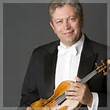
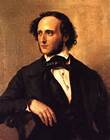 pictures: top: a bandoneon; above, L to R: Alexander Barantschik, Felix Mendelssohn; below, Astor Piazzola, Benjamin Britten.
pictures: top: a bandoneon; above, L to R: Alexander Barantschik, Felix Mendelssohn; below, Astor Piazzola, Benjamin Britten.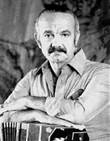
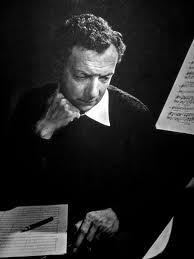
Gung Hay Fat Choy! Happy New Year!
 It’s the Year of the Horse. Come celebrate with Lively friends at the Meet Us at Ming’s luncheon/banquet. It will be an amazing event. The food, veg and non-veg, is so delicious. The attendees are all good looking, intelligent, and witty–just like you! It is difficult to make a seating arrangement. Everyone is interesting. However, they may also be calculating how to win the auction items of their choice. Guittard Chocolate is one of the great prizes in the silent auction. It’s so appropriate that the Guittard Chocolate Co. is part of this event with their generous donation. Guittard is one of very few businesses started in the Gold Rush which is still around and successful today. Since the Ming’s event is meant to support our educational programs, like The Gold Rush! This is a perfect match. It is very easy to fall in love with Guittard. After picking up the 10 lb block of chocolate and another box of chocolate treats, my car smelled like heaven. Come to Ming’s Feb.1st, tomorrow, at noon. Support the Lively Foundation. Supporting a supporter of our programs like Guittard Chocolate is a pleasure. Indulge in the best chocolate and know that by doing it you help education in your community! Wow! Lively wants you to be happy.
It’s the Year of the Horse. Come celebrate with Lively friends at the Meet Us at Ming’s luncheon/banquet. It will be an amazing event. The food, veg and non-veg, is so delicious. The attendees are all good looking, intelligent, and witty–just like you! It is difficult to make a seating arrangement. Everyone is interesting. However, they may also be calculating how to win the auction items of their choice. Guittard Chocolate is one of the great prizes in the silent auction. It’s so appropriate that the Guittard Chocolate Co. is part of this event with their generous donation. Guittard is one of very few businesses started in the Gold Rush which is still around and successful today. Since the Ming’s event is meant to support our educational programs, like The Gold Rush! This is a perfect match. It is very easy to fall in love with Guittard. After picking up the 10 lb block of chocolate and another box of chocolate treats, my car smelled like heaven. Come to Ming’s Feb.1st, tomorrow, at noon. Support the Lively Foundation. Supporting a supporter of our programs like Guittard Chocolate is a pleasure. Indulge in the best chocolate and know that by doing it you help education in your community! Wow! Lively wants you to be happy.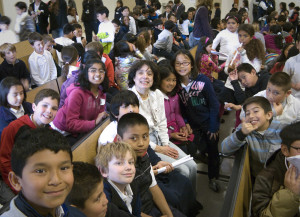 2013 Pictures: Students in San Mateo with Leslie Friedman; Jeanne Watson, L. Friedman, Godfrey Watson; Vicky Kwoh Ching
2013 Pictures: Students in San Mateo with Leslie Friedman; Jeanne Watson, L. Friedman, Godfrey Watson; Vicky Kwoh Ching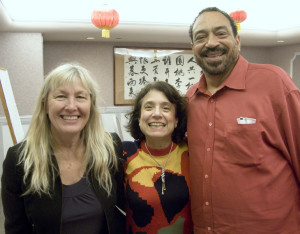
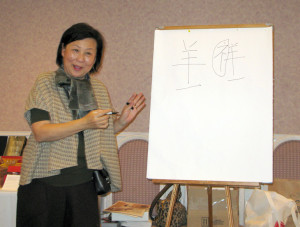
International Dance Festival-Silicon Valley: FESTIVAL ARTISTS
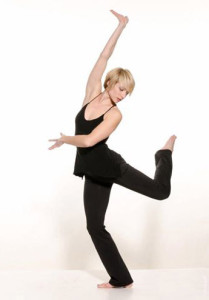 International Dance Festival-Silicon Valley offers an amazing array of dance artists who will perform and teach in Season III, August 11-17, 2014, at the Masonic Center, Mountain View, CA. Mon-Fri Workshop artists include Leslie Arbogast (San Diego,CA/East St. Louis, IL) teaching Katherine Dunham; Leanne Rinelli (Buffalo, NY) teaching Salsa; Leslie Friedman (San Francisco) teaching Contemporary. Each workshop, open to interm-adv. dancers, will teach technique and repertory which dancers may perform in the Festival Concert, Sun., Aug., 17. Full Day of Dance©, Aug. 16, open master classes for all–adv. dancers and non-dancers–offers Pilates mat taught by Amity Johnson, Tap taught by Audreyanne Covarrubias, Salsa taught by L. Rinelli, Dunham taught by L. Arbogast, Contemporary taught by L.Friedman, Electric Lines taught by Etta Walton, Manipuri taught by Dr. Sohini Ray. ALL OF THE TEACHING ARTISTS plus the FESTIVAL DANCERS will perform in the FESTIVAL CONCERT. Don’t miss these wonderful opportunities. For dancers: learn more, stretch your technique, acquire new skills, work with world-renown artists, meet other dancers. For dance lovers: take a class, try something new, get to know dance artists. For the whole community: learn more about dance, expand your appreciation of dance arts. Let the Festival begin! For registration information, watch this blog. Scholarships available.
International Dance Festival-Silicon Valley offers an amazing array of dance artists who will perform and teach in Season III, August 11-17, 2014, at the Masonic Center, Mountain View, CA. Mon-Fri Workshop artists include Leslie Arbogast (San Diego,CA/East St. Louis, IL) teaching Katherine Dunham; Leanne Rinelli (Buffalo, NY) teaching Salsa; Leslie Friedman (San Francisco) teaching Contemporary. Each workshop, open to interm-adv. dancers, will teach technique and repertory which dancers may perform in the Festival Concert, Sun., Aug., 17. Full Day of Dance©, Aug. 16, open master classes for all–adv. dancers and non-dancers–offers Pilates mat taught by Amity Johnson, Tap taught by Audreyanne Covarrubias, Salsa taught by L. Rinelli, Dunham taught by L. Arbogast, Contemporary taught by L.Friedman, Electric Lines taught by Etta Walton, Manipuri taught by Dr. Sohini Ray. ALL OF THE TEACHING ARTISTS plus the FESTIVAL DANCERS will perform in the FESTIVAL CONCERT. Don’t miss these wonderful opportunities. For dancers: learn more, stretch your technique, acquire new skills, work with world-renown artists, meet other dancers. For dance lovers: take a class, try something new, get to know dance artists. For the whole community: learn more about dance, expand your appreciation of dance arts. Let the Festival begin! For registration information, watch this blog. Scholarships available.
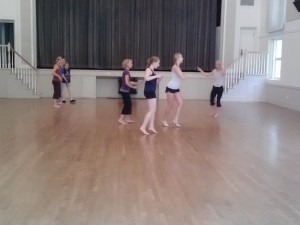
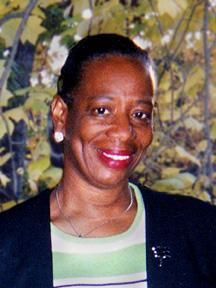
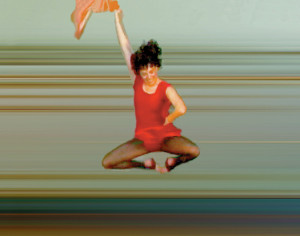
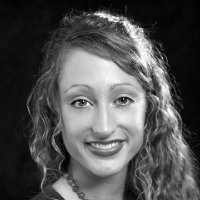
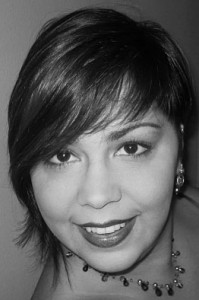
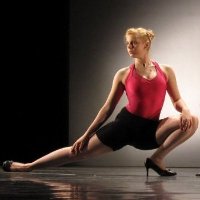 pictures: top: Leanne Rinelli, L to R, top to bottom: Sohini Ray, Leanne Rinelli teaching at Festival 2012, Etta Walton, Leslie Friedman, Leslie Arbogast, Audreyanne Covarrubias, Amity Johnson.
pictures: top: Leanne Rinelli, L to R, top to bottom: Sohini Ray, Leanne Rinelli teaching at Festival 2012, Etta Walton, Leslie Friedman, Leslie Arbogast, Audreyanne Covarrubias, Amity Johnson.
Manipuri Dance in International Dance Festival-Silicon Valley, 2014
The Lively Foundation is proud to announce that Dr. Sohini Ray will teach Manipuri dance in the International Dance Festival-Silicon Valley, Season 3. Dr. Ray is internationally recognized as a leading dancer/teacher/performer of Manipuri, one of the classical dance forms of India. Dr. Ray is a Lecturer at Santa Monica College, in southern California. She performs and teaches in India and in the US and received many awards for her accomplishments in Manipuri dance. She will teach an open master class as part of the Full Day of Dance©, Saturday, August 16, and also perform in the Festival Concert, in Mountain View, on August 17. Manipuri dance originates in the far northeast of India, in the Himalayas. Dr. Ray says that there, “dance is an integral part of life” and that “Manipuri is one of the few dance forms of India where the temple tradition is still alive.” Manipuri is rarely seen or taught in the US. IDF-SV is thrilled to offer this great experience to all dancers and all who are interested in dance. Follow this Livelyblog to get more information about Dr. Ray and all the extraordinary artists who will offer their training to Festival dancers this summer. Picture of Dr. Sohini Ray.
extraordinary artists who will offer their training to Festival dancers this summer. Picture of Dr. Sohini Ray.
SALSA at The International Dance Festival-Silicon Valley!!!

 It’s going to be a hot summer at The International Dance Festival-Silicon Valley! The Lively Foundation is thrilled to announce that LEANNE RINELLI, the hugely popular dancer/choreographer who taught in our first season, is returning to teach Salsa dancing this summer. Leanne will teach during the Mon-Friday workshop and offer an open master class as part of the Full Day of Dance©. She will teach her M-F workshop class a dance to perform in the Festival Concert. Dancers in her workshop will learn the exciting varieties of footwork in Salsa. The dance they learn will be a Salsa circle dance. The rhythm! The music! Can’t sit still thinking of it. The International Dance Festival-Silicon Valley, Season 3, will be August 11-17, 2014, in Mountain View, CA. Intermediate – Advanced dancers, age 18 and older, are invited to participate in the Monday-Friday workshop which includes classes in Dunham dancing, taught by Leslie Arbogast; Salsa, taught by Leanne Rinelli; and Contemporary plus Improv/Composition, taught by Leslie Friedman. Dancers in the M-F workshops may dance in the Festival Concert on the program with acclaimed professionals, including their teaching artists. The Full Day of Dance© on Saturday, Aug. 16, will include classes in Pilates, Tap, Contemporary, Dunham, Salsa, Manipuri Dance, and Etta Walton’s Electric Slide & other lines. Don’t miss this Festival! It is a unique and powerful resource for dancers who want to tune their technique and learn more about dancing. picture: Leanne Rinelli teaching, IDF-SV, 2012, and in performance. See more pictures of the Festival artists at facebook/The Lively Foundation and Facebook/International Dance Festival-Silicon Valley.
It’s going to be a hot summer at The International Dance Festival-Silicon Valley! The Lively Foundation is thrilled to announce that LEANNE RINELLI, the hugely popular dancer/choreographer who taught in our first season, is returning to teach Salsa dancing this summer. Leanne will teach during the Mon-Friday workshop and offer an open master class as part of the Full Day of Dance©. She will teach her M-F workshop class a dance to perform in the Festival Concert. Dancers in her workshop will learn the exciting varieties of footwork in Salsa. The dance they learn will be a Salsa circle dance. The rhythm! The music! Can’t sit still thinking of it. The International Dance Festival-Silicon Valley, Season 3, will be August 11-17, 2014, in Mountain View, CA. Intermediate – Advanced dancers, age 18 and older, are invited to participate in the Monday-Friday workshop which includes classes in Dunham dancing, taught by Leslie Arbogast; Salsa, taught by Leanne Rinelli; and Contemporary plus Improv/Composition, taught by Leslie Friedman. Dancers in the M-F workshops may dance in the Festival Concert on the program with acclaimed professionals, including their teaching artists. The Full Day of Dance© on Saturday, Aug. 16, will include classes in Pilates, Tap, Contemporary, Dunham, Salsa, Manipuri Dance, and Etta Walton’s Electric Slide & other lines. Don’t miss this Festival! It is a unique and powerful resource for dancers who want to tune their technique and learn more about dancing. picture: Leanne Rinelli teaching, IDF-SV, 2012, and in performance. See more pictures of the Festival artists at facebook/The Lively Foundation and Facebook/International Dance Festival-Silicon Valley.
Dunham Dance Technique at the International Dance Festival-Silicon Valley
Wonderful news! Leslie Arbogast, an internationally recognized expert at teaching and performing Dunham dance will be a lead teacher at this summer’s Festival. She will teach Dunham technique and repertory to participants in the M-F workshops, teach an open master class at the Full Day of Dance© and also perform in the Festival Concert. We are thrilled to have her and Dunham dance as part of the Festival. “Dunham Technique is a fusion of Ballet, Modern, and cultural dances associated with the African Diaspora, created by dancer, choreographer, anthropologist, and humanitarian Katherine Dunham. Considered a “way of life”, Dunham Technique is not only dance, but also a theoretical and philosophical model that may be applied to all aspects of a dancer’s life,” wrote Ms Arbogast. Ms Arbogast studied in East St. Louis with master Dunham dancers and performed internationally. She has been a guest instructor of Dunham, Afro-Haitian, and Samba in Muscat, Oman, and Serra Grande, Brazil. She taught Dunham technique at the City Studio Dance Center, Dance Anthropology at the St. Louis Juvenile Detention Center, and Dance Therapy for those recovering from mental illness at the Independence Center, in St. Louis, for 8 years. She now lives and dances in San Diego where she is pursuing a graduate certificate in Native American Studies. We are thrilled to have her join in the Festival! Don’t miss this opportunity; the International Dance Festival-Silicon Valley, 8/11-17, Mountain View, CA.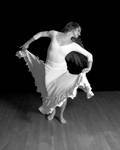

Etta Walton Lights Up The Festival of Lights
Great News! Etta Walton will lead the audience in a dance as part of The Festival of Lights. You are not required to participate, but Etta’s energy is contagious. You will find it hard to sit still. No special training needed; just a sense of fun. She might teach the Electric Slide; she might choose something else. Whatever it is it will be fun to do. The Lively Foundation likes its audiences to feel they’ve done something special by attending our concerts. Get up and join the fun! The Festival of Lights will renew your own personal energy source. Get your tickets now!